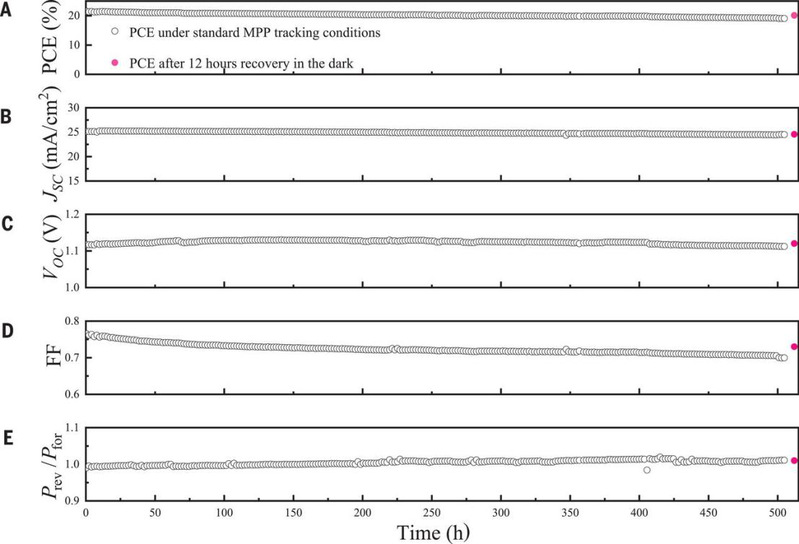Recently, a method using methylammonium thiocyanate (MASCN) vapor treatment to convert δ-FAPbI3 to the desired pure α-phase below the thermodynamic phase-transition temperature has been raised by an international research team, led by Fudan scientists Zhan Yiqiang and Zheng Lirong and EPFL scientists Anders Hagfeldt and Michael Grätzel, in the paper titled “Vapor-assisted deposition of highly efficient, stable black-phase FAPbI3 perovskite solar cells” published in Science on October 2.
According to previous research, metal halide perovskite solar cells (PSCs) can reach a high power-conversion efficiency (PCE) of 25.5%, far exceeding other thin-film solar cells. Among all the metal-halide perovskites, FAPbI3 (where FA is formamidinium) has been shown to be an ideal candidate for efficient, stable PSCs. Obtaining highly crystalline, stable, and pure α-phase FAPbI3 films, which is photoactive, has been of vital importance. However, FAPbI3 undergoes a phase transition to the photoinactive δ-phase below 150°C.
Molecular dynamics (MD) simulations show that the SCN– anions promote the formation and stabilization of α-FAPbI3. These vapor-treated FAPbI3 PSCs exhibit outstanding photovoltaic and electroluminescent performance.
The researchers realize a complete conversion from δ- to α-FAPbI3 at 100°C using the MASCN vapor treatment method. This phase transition can also be achieved using FASCN vapor. The vapor-treated FAPbI3 film remained in its pure black phase even after 500 hours of annealing at 85°C, whereas the reference FAPbI3 film decomposed to PbI2 during the heat exposure.

Stable and phase pure MASCN vapor-treated FAPbI3 films.
Vapor-treated FAPbI3 films were annealed at 85°C for 500 hours in an N2 environment.
They also performed long-term operational stability tests for 500 hours with the maximum power point (MPP) tracking under continuous 1 sun illumination for our FAPbI3 PSCs.

Operational stability test of the vapor-treated FAPbI3-based PSCs.
Tests were performed under 500 hours of MPP-tracking conditions for (A) PCE, (B) Jsc, (C) Voc, (D) FF, and (E) hysteresis factor (Prev/Pfor).
These findings are important for developing stable and pure black-phase FAPbI3-based PSCs. The vapor-treated FAPbI3 PSCs showed high efficiency and good long-term stability under MPP tracking conditions, promoting the extensive use of solar energy in all aspects of our lives. They can be used to develop efficient large-area and flexible photoelectronic devices, and provide sustainable, autonomous power supply for robots for example. Also, because of its high open-circuit voltage and high external quantum efficiency electroluminescence yield, pure α-FAPbI3 will be useful for other applications such as light-emitting diodes and photodetectors.
Link:https://www.fudan.edu.cn/en/2020/1016/c344a106670/page.htm

